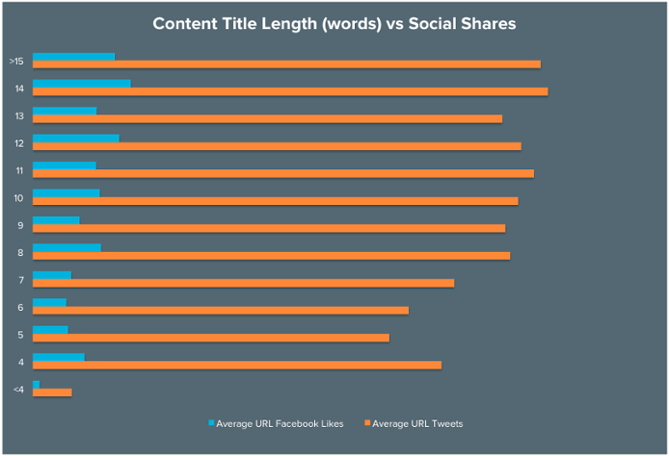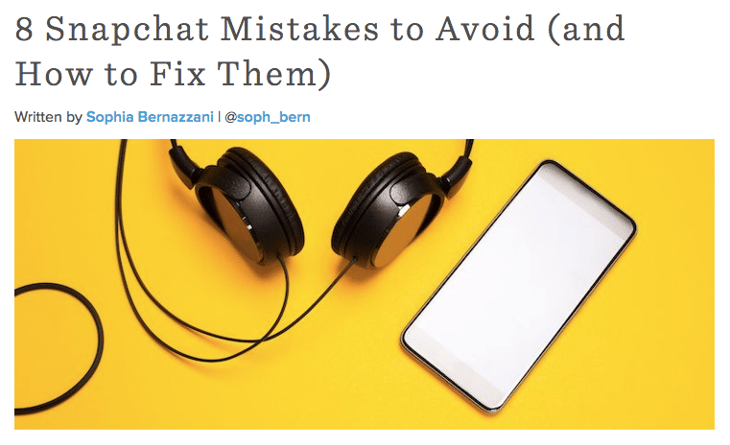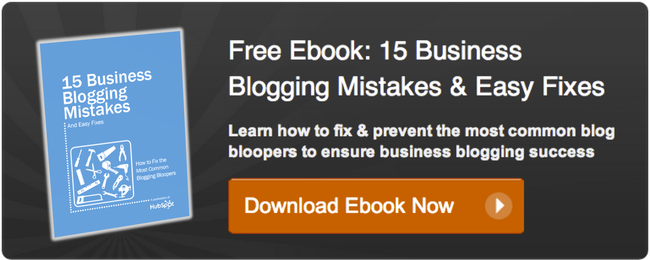
Even though we all are crunched for time, spouting off a mediocre blog post for the sake of hitting a deadline isn't worth it. Considering our audiences have access to countless other articles, it's unlikely that they'd settle for a half-baked attempt.
We get it, though: It can be difficult to keep track of all the right blog components when you've got a full plate of projects. There's a lot to remember when crafting a solid blog post -- which means there's also a lot to forget.
To make sure nothing slips through the cracks and every one of your blog posts is both comprehensive and useful to your readers, we've created a rundown of everything you need to remember when you start writing. Bookmark this blog post, and make sure you've completed this checklist the next time you press "publish."
How to Write a Perfect Blog Post
1) Headline
Every great blog post starts with a headline that grabs the reader's attention, and compels them to click and keep reading to learn more. Internet readers have very short attention spans -- around eight seconds in length -- and the headline is one of the critical first elements that help readers decide if they want to click and stay on your site. In fact, 60% of readers don't read past the headline, which presents a big opportunity. Here's how to write a great headline:
Brainstorm a Working Title
Start with a working title in mind and brainstorm how to make the angle as interesting as possible. This is the phase of blogging where you start with a general topic and narrow down exactly what you want to write about that topic.
For example, if I want to write about the topic of "blogging," I need to come up with a more specific working title first. And those working titles depend on the format of my blog post. Whether you're writing a listicle, an explainer article, or a how-to guide, brainstorm a few titles to guide your research. Here are a few ideas:
- The Guide to Business Blogging
- How to Get Started with Blogging
- 10 B2B Blogging Strategies We Love (and Why)
Once you have an angle you want to pursue, it's time for keyword research.
Conduct Keyword Research
Keyword research will help you create a headline that will perform well on search engine results pages (SERPs). Your headline is one of many factors Google considers when ranking results on SERPs, and an optimized title will help people find the information they need more easily.
Tools like Google's Keyword Planner, SEMrush, and HubSpot's keywords tool can help you determine exactly which terms people are searching for, and which will be easier or more difficult for your new blog post to rank for.
"Blogging" is a broad search term, and when I dropped it into SEMrush, more than 75,000 keyword results were returned. We recommend targeting long-tail keywords that are more specific to the exact audience you're targeting -- which you can learn more about by creating buyer personas.
When I searched for "business blogging," on the other hand, I found keywords with lower search volume, but would be more specifically targeted to the audience I'm trying to reach.
Once you've nailed the keyword you're targeting, you can create your final title, as well as your headers (more on that later). For the purposes of this example, I chose, "The Definitive Guide to Business Blogging."
Craft a Title
When it comes to the art of the perfect blog post, we've done some analysis and looked at how our own titles have performed. Here are the consistent principles we found:
- The ideal blog post title length is 60 characters.
- Headlines between 8 and 12 words are shared most often on Twitter.
- Headlines between 12 and 14 words are liked most often on Facebook.

We also found that headlines ending with a bracketed clarification -- for example, "The Definitive Guide to Business Blogging [New Data]" -- performed 38% better than titles without that clarification.
If you're having trouble trimming down the length of a title, run it through SEOmofo and Twitter to see how the title will appear on SERPs and when it's shared on social media.
2) Meta Description
The meta description doesn't live on your blog post -- it lives somewhere different that's just as important.
The meta description refers to the HTML attribute that explains the contents of a given web page. Basically, it's a short description you see on a SERP to "preview" what the page is about. Check it out below:

The headline, URL, and meta description work together to convince searchers to click on a link to read the entire blog post, so you'll want to put thought into what to write for this piece of your blog post, too.
In our analysis, we found the ideal meta description length is under 155 characters.
3) Featured Image
Featured images usually sit at the top of a blog post and are another element to draw readers in to learn more. The image should reflect what the story is about, intrigue readers, or provoke them. It shouldn't be too literal or obvious, and it can simply be aesthetically pleasing, too.
Here's an example of one of our featured images. It features a mobile phone and a bright yellow color -- fitting, considering I was writing about Snapchat:

Make sure you choose featured images that you're legally able to edit and distribute. Here are some of our suggestions:
4) Introduction
The introduction needs to quickly hook your reader and convince her to read the rest of your blog post. It also has to let the reader know what your post is about, so she knows what she's getting. Nobody likes clickbait, so you want to make sure your post is about what the headline says it is.
Whether your approach is humor, interesting and surprising facts, or asking a question, find a way to make the first lines of your blog posts as attention-grabbing as possible. Write an introduction that would make you want to keep reading an article -- a quick few paragraphs to draw the reader in and let him know what he's about to read.
Here's an introduction my colleague, HubSpot Staff Writer Aja Frost, wrote that does this effectively:

Frost uses a cliffhanger approach here -- and now I want to read more to learn about how hard it is to be an entrepreneur. For more introduction inspiration outside of HubSpot Blogs, I recommend reading posts on Medium and Buffer.
5) Sub-Headers
Sub-headers are another on-page SEO element that helps your blog post to rank in Google Search. Sub-headers organize and break up your blog post into different sections to signal to Google (and your reader) what the post will cover.
Sub-headers should be written with H2 tags or smaller -- never H1 tags, which signal a title. Use sub-headers to split up sections of your blog post -- making sure to integrate the keywords you're using this post to target.
In this particular post, I'm targeting the keywords "perfect blog post," which I've used in my title and the first sub-header.
6) Body
The meat of your blog post -- separated by various sub-headers, of course -- is where your readers will undoubtedly derive the most value. In our analysis, the ideal blog post length is roughly 2,100 words, but that will vary depending on your topic. Medium found that posts that took seven minutes to read earned the most engagement and attention, and serpIQ found that most of the top-10 Google results are between 2,032 and 2,416 words.
7) Data
Whenever it's possible to use data and numbers, do so. Numbers written as numerals (23) instead of words (twenty-three) have been shown to attract reader attention when they quickly scan what they're reading online. Additionally, numbers represent facts -- which are unimpeachable and most trusted by your readers.
If you're using numbers or data in your blog post, add [Data] or [Research] to your headline for additional impact, as we discussed earlier in the post.
8) Multimedia Elements
We've told you a few times that your reader is having trouble staying focused, so wherever it's possible to use multimedia content to break up the blog post and re-engage your reader, add images, videos, audio recordings, and social media posts. Changing up the format of your blog post will provide additional value to your reader while making sure their eyes are focused on what they're reading and seeing.
Works, huh?
9) Conclusion
When you're ready to wrap up and sign off, make sure to let your reader know the article is closing. Your conclusion doesn't need to be lengthy, but it should serve to recap the blog post the reader just finished and provide more resources and guidance, if wanted. More on that next.
10) Call to Action
Finish your conclusion with a meaningful call to action (CTA) for your reader -- whether it's advice, a content offer, or a link to another related blog post. Use the last lines of your post to leave the reader feeling like he or she learned something from you -- and like there's even more to learn from you, creating the desire to click a link or CTA image and read more.
For more ideas on how to write a killer blog post, learn from our analysis of 175,000 B2B and B2C blog posts.
What's your go-to blueprint for a blog post? Share with us in the comments below.
from HubSpot Marketing Blog https://blog.hubspot.com/marketing/anatomy-perfect-blog-post


No comments:
Post a Comment